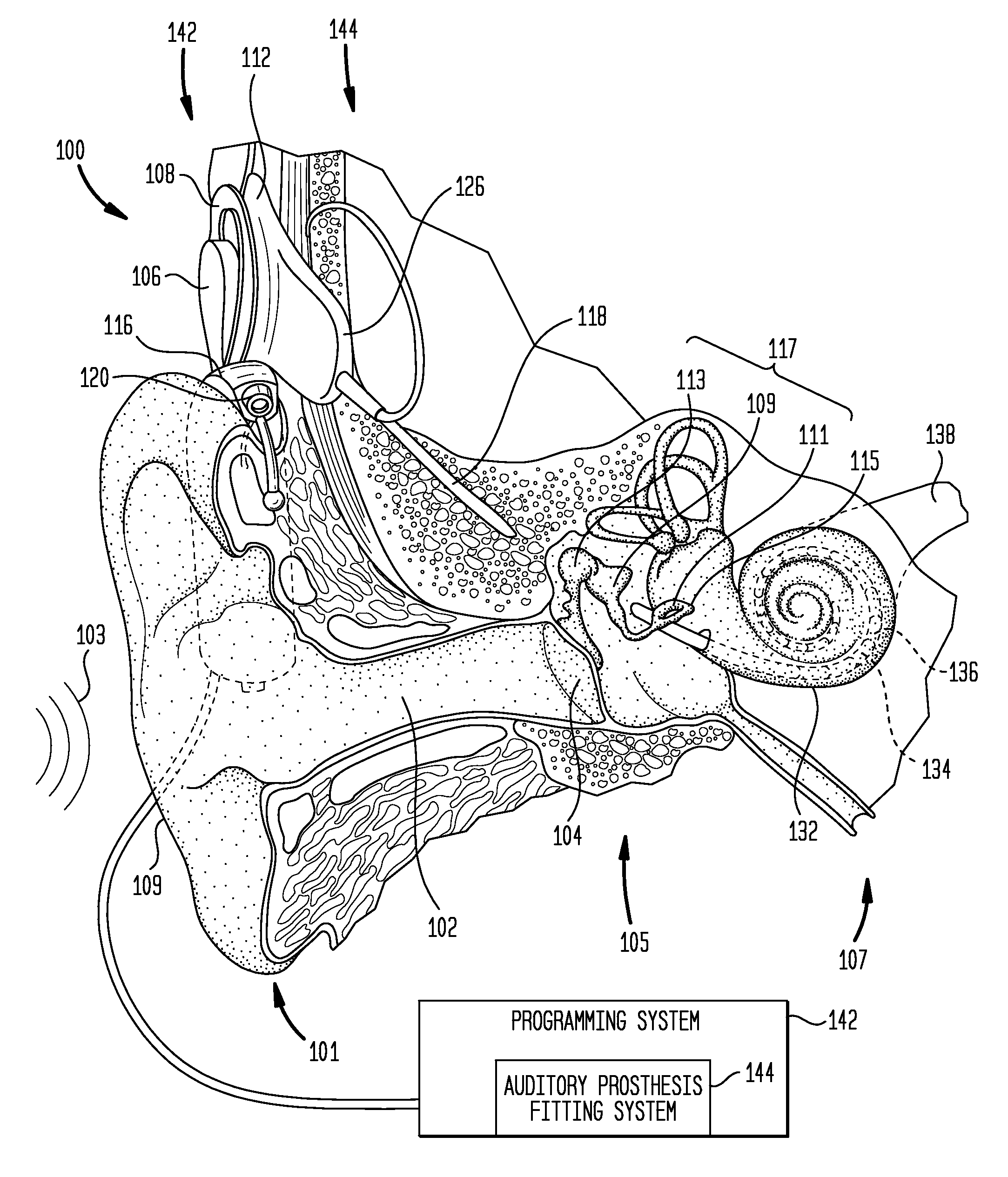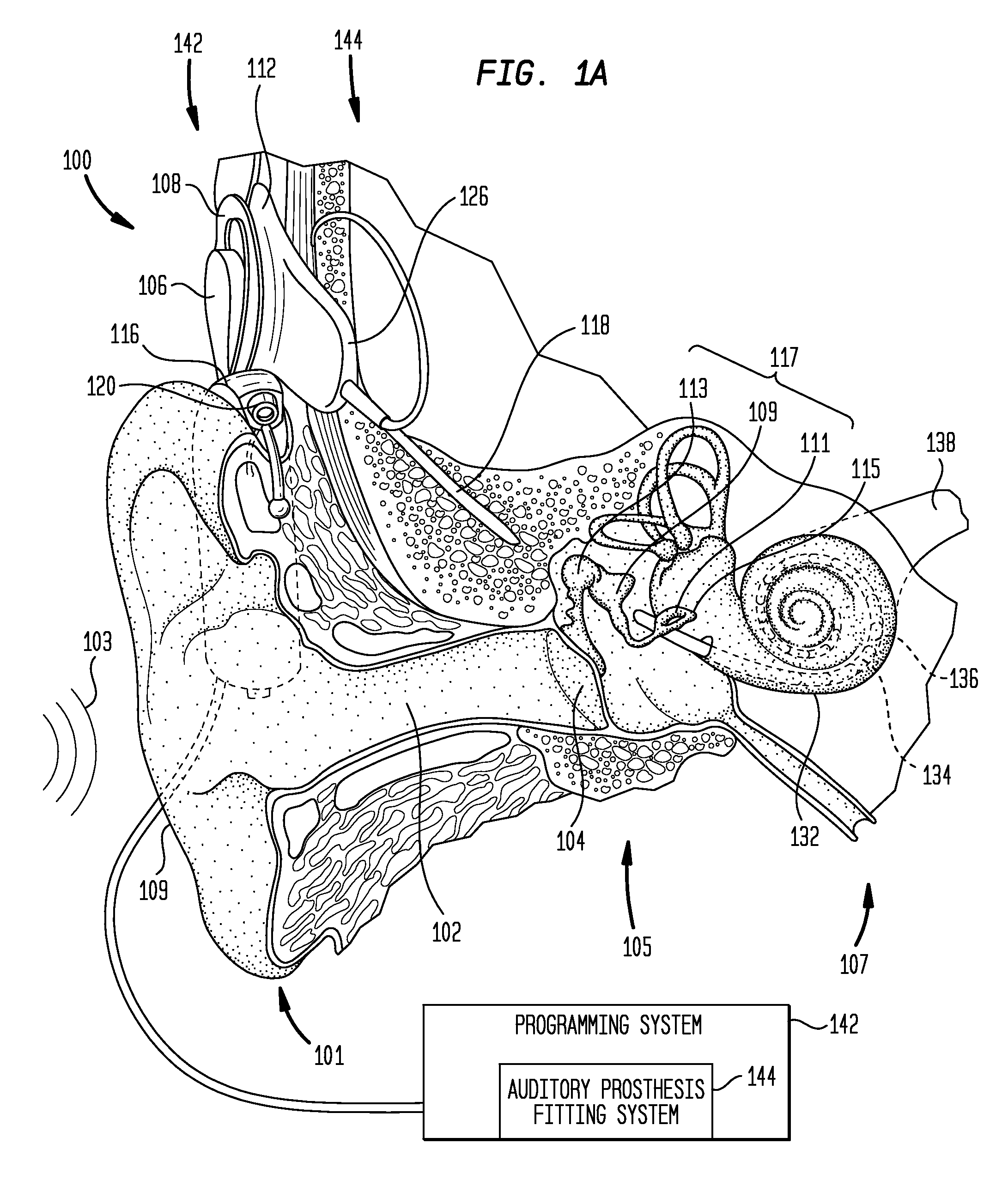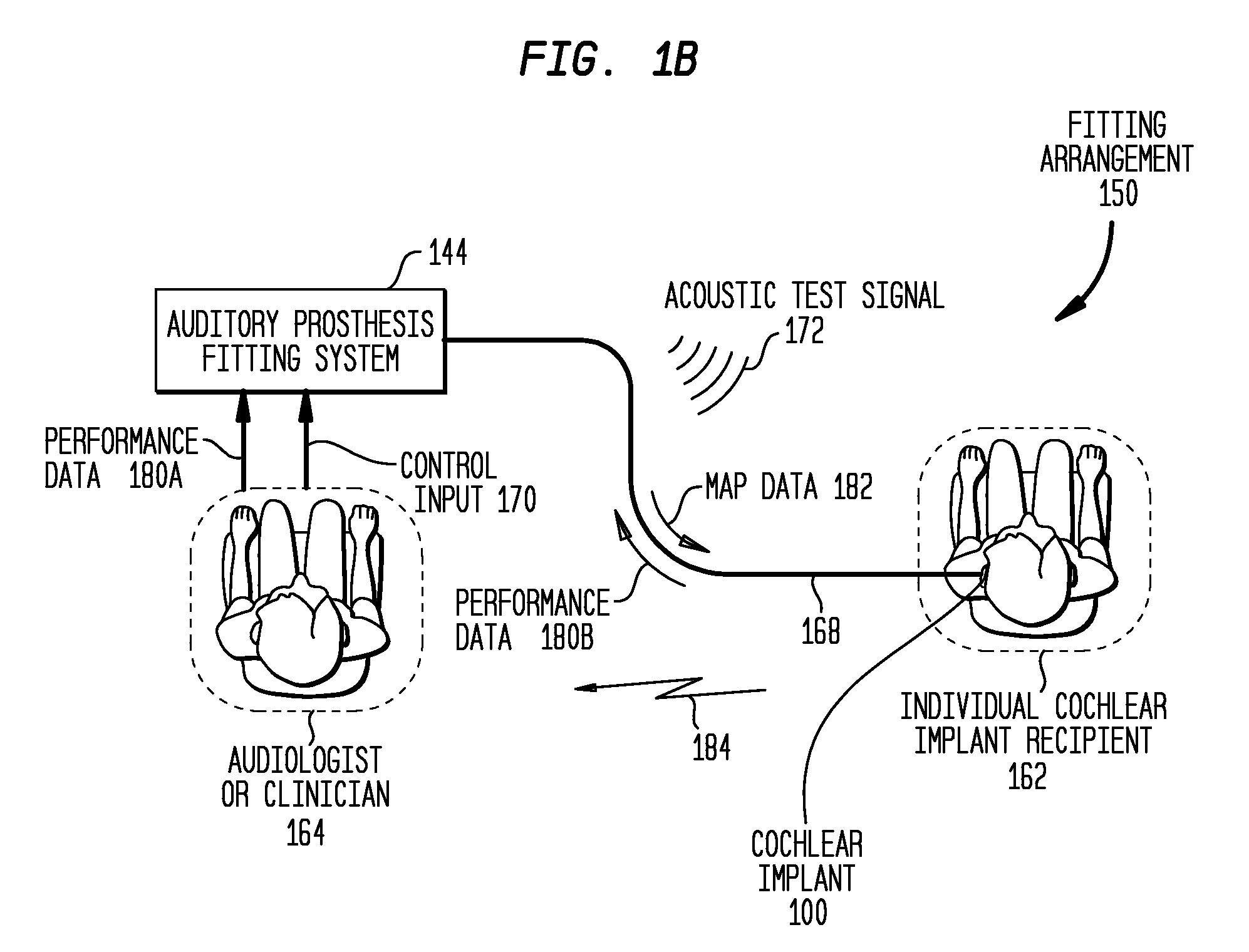Method and device for automated observation fitting
a technology of automatic observation and fitting, applied in the field of auditory prosthesis, can solve the problems of conductive hearing loss, impeded normal mechanical pathways that provide sound to hair cells in the cochlea, and impaired hearing
- Summary
- Abstract
- Description
- Claims
- Application Information
AI Technical Summary
Problems solved by technology
Method used
Image
Examples
Embodiment Construction
[0034]Aspects of the present invention relate generally to fitting an auditory prosthesis to a recipient. Embodiments of the invention automatically determine operational thresholds of the prosthesis based on changes in the activity of the recipient that occur in response to applied stimulation signals. Such changes in recipient activity are detected by an inertial measurement unit (IMU) permanently or temporarily secured to or implanted in the recipient as an integral part of the prosthesis or a separate device operationally coupled to the prosthesis.
[0035]Embodiments of the present invention may be implemented in conjunction with a variety of auditory prostheses commercially available today or developed in the future. For ease of illustration, embodiments of the present invention are described herein in conjunction with the fitting of one particular type of auditory prosthesis, a cochlear implant.
[0036]Although the present invention may be implemented to facilitate the fitting of ...
PUM
 Login to View More
Login to View More Abstract
Description
Claims
Application Information
 Login to View More
Login to View More - R&D
- Intellectual Property
- Life Sciences
- Materials
- Tech Scout
- Unparalleled Data Quality
- Higher Quality Content
- 60% Fewer Hallucinations
Browse by: Latest US Patents, China's latest patents, Technical Efficacy Thesaurus, Application Domain, Technology Topic, Popular Technical Reports.
© 2025 PatSnap. All rights reserved.Legal|Privacy policy|Modern Slavery Act Transparency Statement|Sitemap|About US| Contact US: help@patsnap.com



